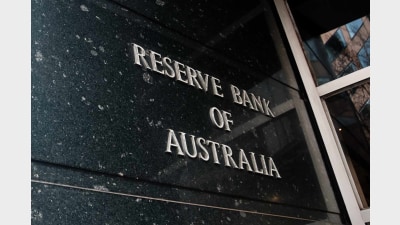Henry Tax Review does the time warp again


There is much the Rudd Labor Government can and should do to improve the attractiveness of superannuation as an investment that will ultimately reduce pressure on the nation’s social welfare system, writes Mike Taylor.
Irrespective of the recommendations of the Henry Tax Review and, indeed, the ultimate outcome of the Cooper Review into superannuation, there is much the Rudd Labor Government can and should do to improve the attractiveness of superannuation as an investment that will ultimately reduce pressure on the nation’s social welfare system.
2010 is a year during which the Treasury will provide the Government with a third intergenerational report, and the proof that the Rudd Government is already aware of its essential content is revealed in the Prime Minister’s comments regarding Australia’s impending health funding crisis.
Indeed, if one closely scrutinises statements made by the Prime Minister, Kevin Rudd, and the secretary of the Treasury, Ken Henry, over recent months, they will discern a common theme — an awareness of the impending challenges that will confront Australia’s health and retirement incomes regimes.
Sadly, to this point, neither Rudd nor Henry have seen fit to discuss both health and retirement incomes in the same breath and then place both in the context of a more effective and efficient superannuation regime.
They should.
Henry may have a jaundiced view about the ultimate benefit of lifting the superannuation guarantee from its current level of 9 per cent to, say, 12 per cent or even 15 per cent, but he seems to have a very clear view about the impact on the Budget of under-funded retirees.
Similarly, Rudd seems to have a very clear view about the impact on the health budget of an ageing population yet, to this point, he seems to have made little connection with the benefits that will flow from encouraging retirement incomes self sufficiency.
It seems entirely probable that the third intergenerational report will continue the themes revealed in the first and second reports — both of which point to the health funding crisis and both of which point to the perils of an ageing population.
It was the first intergenerational report that prompted the then Treasurer, Peter Costello, to advocate that Australians remain in the workforce longer and, in part, gave rise to the current Government’s move to lift the age at which people will be able to access the age pension.
However, the benefits of both introducing the superannuation guarantee and then lifting it to 15 per cent have been known for nearly 15 years.
The phased increase of the superannuation guarantee from its introductory level of 3 per cent was always part and parcel of the economic strategy drawn up by the Hawke Government and prosecuted by the then Treasurer and later Prime Minister, Paul Keating.
Keating makes no secret of the fact that he still believes that strategy could and should have been followed through.
While political ideology and a certain amount of bloody-mindedness clearly coloured the Howard Government’s initial approach to the superannuation guarantee, that attitude appeared to be moderating towards the end of its period in office.
This moderating in attitude was probably influenced by the realisation that the initial opposition to the superannuation guarantee, mounted by employer groups such as the Australian Chamber of Commerce and Industry, was seen to be misconceived.
What the employers initially saw as a virtual wage impost revealed itself to be a boon to national savings when combined with the wages moderation that flowed from key changes to Australia’s industrial relations systems under both Labor and the Coalition.
While there are many politicians who likely believe that employers and others will mount a major campaign against any further lifting in the superannuation guarantee, such concerns reflect the realities and beliefs of the 1980s, not 2010.
There is hardly a person in the Australian financial services industry who believes lifting the superannuation guarantee to 12 per cent or 15 per cent is a mistake.
However, there has been a long tradition of opposition to the move within the Department of Treasury in Canberra, and it seems that tradition is set to continue.
The May Federal Budget may contain some further refinements to superannuation in the form of taxation changes benefiting lower income earners at the expense of those on higher incomes, but this will not significantly alter the underlying retirement incomes self-sufficiency projections.
If the superannuation guarantee remains fixed at 9 per cent, Australia’s retirement incomes policy will remain locked in a political and bureaucratic time warp.
Recommended for you
High risk, high return assets will become dangerous options for superannuation funds under the Federal Government’s planned $3 million superannuation changes, writes Brad Twentyman.
Economic policy can no longer ignore the macroeconomic impacts of Australia's superannuation system and the emerging policy implications, writes Tim Toohey.
In an age where climate concerns and social consciousness dominate headlines, it’s no surprise that investors are increasingly seeking investments that align with their values, writes Simon O’Connor.
How profit-for-member superannuation funds can embed 'commerciality with a heart' and marry a member-first culture with commercial outcomes.













Add new comment